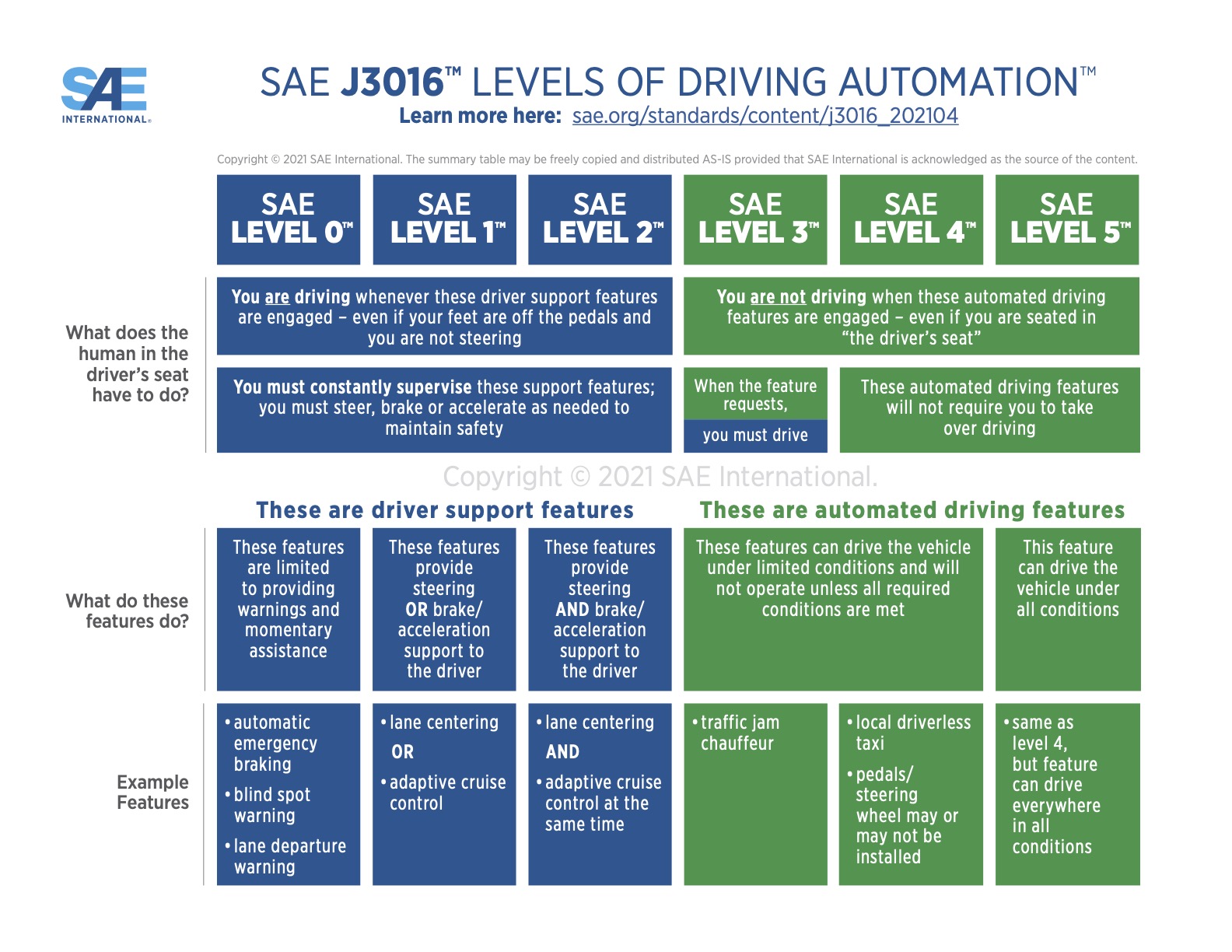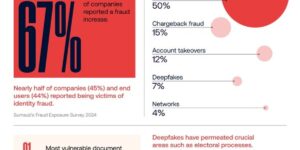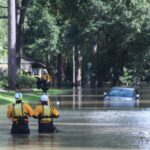On March 20, 2022, industry publication Road & Track caused a bit of a splash when it reported not only that German auto manufacturer Mercedes-Benz plans to seek approval for its “Drive Pilot” system here in the United States by year end but also that “Mercedes will accept full legal responsibility for the vehicle whenever Drive Pilot is active.”
Executive Summary
Level 3—the first level of truly automated driving—is almost here, according to recent reports about Mercedes-Benz. While the reports reveal the German auto maker’s intention to seek approval for its Drive Pilot system in the U.S. by year-end, and to accept full responsibility for crashes in Drive Pilot, Mercedes’s commitment is practically illusory in its impact on U.S. consumers, insurers and liability professionals, write lawyers Mike Nelson and Stephanie Niehaus. Here, they explain why and also briefly describe the prospects of using vehicle data to objectively determine liable parties in auto accidents, including the manufacturers of increasingly autonomous vehicle systems.Per the Road & Track report:
Mercedes’ new Drive Pilot seems, in operation, like many ‘traffic jam assistant’ technologies already on sale today. On certain highways, below 40 mph, a Drive Pilot-equipped S-Class or EQS will take control of the car’s speed, steering, and brakes to move you along in traffic. But there’s one key difference: Once you engage Drive Pilot, you are no longer legally liable for the car’s operation until it disengages. You can look away, watch a movie, or zone out. If the car crashes while Drive Pilot is operating, that’s Mercedes’ problem, not yours.
Source: Mack Hogan, “Mercedes Drive Pilot Beats Tesla Autopilot By Taking Legal Responsibility,” Road & Track (March 20, 2022)
Road & Track does not reference or cite a specific press release or other source in which Mercedes makes this seemingly groundbreaking commitment to accept legal liability. But the report is consistent with then-aspirational commitments several manufacturers and tech companies made in 2015 to accept liability if their autonomous technologies were found to be responsible in an accident.
In a 60-Minutes episode called “Hands Off the Wheel” that aired on Oct. 4, 2015, Mercedes was identified along with Google as saying “if their technology is at fault once it becomes commercially available, they’ll accept responsibility and liability.” Just days later, Volvo announced that its president and chief executive would include commitments during a speech in Washington, D.C., that “Volvo will accept full liability whenever one of its cars is in autonomous mode, making it one of the first car makers in the world to make such a promise.” (Volvo Press Release, Oct. 7, 2015).
As it stands today, though, only Mercedes faces the potential of having to satisfy its prior liability commitments with its release of Drive Pilot—its first SAE Level 3 system. Many readers will recognize SAE Level 3 as the first level of truly automated driving. As reflected in the accompanying SAE graphic, updated as of last year, Level 3 features are capable of driving the vehicle—albeit only under specific conditions—and do not require driver supervision unless and until the feature makes a take-over request of the driver. For further context, despite its marketing and promises of “full self-driving,” even Tesla has only reached SAE Level 2 with its currently available features.
On the Autonomous Driving page of its website, Mercedes touts that it was the “first automotive manufacturer worldwide to secure internationally valid system approval for conditionally automated driving (SAE Level 3),” referring to authorization it received late last year from the German government to begin selling S-Class vehicles equipped with Drive Pilot in Germany. According to the press release announcing that approval: “The German Federal Motor Transport Authority (KBA)…granted system approval for [Drive Pilot] on the basis of the technical approval regulation UN-R157, thus paving the way for offering such a system internationally, provided that national legislation allows it.”
The press release also states that the “first customers will be able to buy an S-Class with Drive Pilot in the first half of 2022, enabling them to drive in conditionally automated mode at speeds of up to 60 km/h in heavy traffic or congested situations on suitable stretches of motorway in Germany.” (Source: Mercedes-Benz Press Release, Dec. 9, 2021).
And there, in essence, is the fine print. Several paragraphs into its report, even Road & Track qualifies that:
Right now, Drive Pilot can only engage at speeds under 40 mph (60 km/h in Germany) on limited-access divided highways with no stoplights, roundabouts, or other traffic control systems, and no construction zones. Eligible roads must be mapped by Mercedes for Drive Pilot use (similar to GM SuperCruise); the automaker has already mapped every such highway in Germany, and most of those in Nevada and California. The system will only operate during daytime, in reasonably clear weather, without overhead obstructions. Inclement weather, construction zones, tunnels, and emergency vehicles will all trigger a handover warning. And no, you can’t close your eyes or go to sleep while it operates.
In other words, while commendable in principle, Mercedes’s apparent commitment to “accept responsibility and liability” if Drive Pilot is at fault in an accident is really quite limited.
Even in Germany, where Drive Pilot is approved for commercial sale and is operable across 13,191 kilometers of the Autobahn network, the circumstances under which Drive Pilot can be used are circumscribed pursuant to the regulation (UN-R157) under which it was approved.
Here in the United States, where regulations and infrastructure can differ dramatically from state to state and Level 3 consumer vehicles remain a thing of the future, Mercedes’s commitment is practically illusory in its impact on consumers, insurers and liability professionals. Indeed, Mercedes acknowledges on its website that, while it is “working intensively” to obtain regulatory approval for Drive Pilot in California and Nevada by the end of 2022, the availability of Drive Pilot in those states assumes “the legal and regulatory framework allows use of the system.”
Right now, that is just an assumption.
Still, the commitment by manufacturers to accept increasing responsibility for increasingly autonomous systems is not insignificant. In some ways, it is merely a recognition of our existing product liability regime—when a product malfunctions during its expected use, the manufacturer can be held liable. A manufacturer’s pre-acceptance of liability also can help drive innovation and adoption.

But we think these commitments also reflect an awareness by manufacturers that advanced automotive technologies themselves can advance liability determinations. Connected and autonomous cars generate vast amounts of data during normal use and at trigger events, and that data can be used to objectively determine fault in the event of an accident. BMW noted as much in a May 2020 Safety Assessment Report for SAE Level 3 Automated Driving Systems, stating “all BMW vehicles equipped with highly automated driving technology such as the SAE Level 3 BMW ADS have a number of data recording capabilities to allow for an accurate reconstruction of crash-related events.”
In the face of this objective data, the at-fault party will be hard-pressed to deny liability, including if that party is the manufacturer. To loosely quote Mercedes, the introduction of these technologies will result in a “radical paradigm shift.” We believe this shift will encompass a new approach to liability determination based on vehicle data.
The authors would like to thank Kimberly Gross for her research assistance in preparing this article.





















 The Evolving GenAI Journey: Three Ways the Technology Is Impacting P/C Insurance
The Evolving GenAI Journey: Three Ways the Technology Is Impacting P/C Insurance  Hurricanes Helene, Milton Pressure NFIP; Expected Loss Ratio 200%
Hurricanes Helene, Milton Pressure NFIP; Expected Loss Ratio 200%  Mitigating Flood Risk 10x More Cost Effective Than Rebuilding: Swiss Re
Mitigating Flood Risk 10x More Cost Effective Than Rebuilding: Swiss Re  Retail Workers Consider Quitting Due to Safety Concerns Ahead of Holiday Shopping Season
Retail Workers Consider Quitting Due to Safety Concerns Ahead of Holiday Shopping Season 














